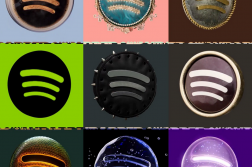Most of us know about using condoms or the pill, however the information out there about other methods of contraception can be less easy to access. Having the power to make informed choices is so important, so here is our handy guide to some less obvious methods of contraception:
The Implant (More than 99% effective)
A small, flexible rod which is placed under the skin of your upper arm, the implant releases progestogen to prevent pregnancy for 3 years. It can help those with heavy or painful periods, however, it can also make periods more irregular. An appointment to have the implant put in takes 20 minutes, and you’ll be given a local anaesthetic to prevent any pain as they insert it.
The Injection (More than 99% effective)
The contraceptive injection lasts for 8-13 weeks, and also uses progestogen. It can affect your periods, and requires you to remember to keep up to date with your injections. The injection is normally done into the bottom, but can also be done into the upper arm. Fertility can take up to a year to return to normal levels, so this method is not ideal for anyone who wishes to get pregnant in the next year.
The IUD (More than 99% effective)
The intrauterine device is a small, T-shaped, plastic and copper device which releases copper to prevent pregnancy for 5-10 years. It is inserted into the uterus by a doctor or nurse, who will also teach you how to check it is still in place. Whilst it may initially cause heavier periods, the lack of hormonal side effects is great for anyone who struggles with hormone-reliant methods.
The IUS (More than 99% effective)
The IUS (intrauterine system) is similar to the IUD, but releases progestogen, rather than copper, to prevent pregnancy for 3-5 years. Over time it can lead to lighter and shorter periods, and it is fitted in the same way as the IUD. Fitting the IUS takes 5 minutes, with the entire appointment taking around 20 minutes.
Vaginal Ring (More than 99% effective)
The vaginal ring is a small soft ring placed inside of the vagina, which releases both progestogen and oestrogen. It lasts for a month, with the ring needing to be kept in for 21 days before having a break of up to 7 days. The ring can make periods lighter and relieve symptoms of PMS, plus you can have sex and use tampons with the ring still in place.
The Patch (More than 99% effective)
This is a small, sticky patch which releases oestrogen and progestogen. Each patch is worn for one week, and patches must be worn for three consecutive weeks before taking a week’s break. It can help with heavy or painful periods, however is more visible than other methods, depending on where you place it.
The Diaphragm/Cap (92-96% effective)
These are placed covering the cervix up to three hours before sex, after being coated in spermicide, until 6 hours after sex. They don’t rely on hormones, however they are less effective than other methods and are not suitable for anyone with an allergy to latex or spermicide.
P.S. All of these methods act as contraception, but do not prevent STIs, so don’t forget to also use condoms or female condoms too!
Disclaimer: This does not constitute medical advice, and methods can have different side effects for different people. All information is from nhs.uk, however please consult with your GP or a member of staff at your local sexual health (GUM) clinic for the most up-to-date and reliable advice.




